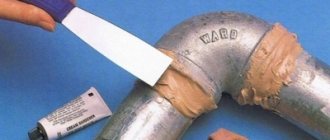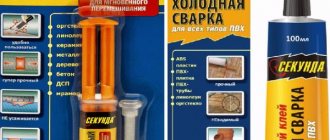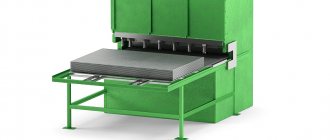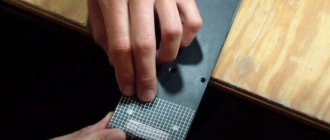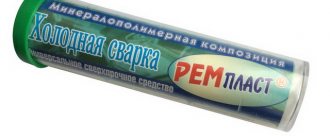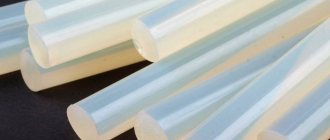Basic properties of silicone
Silicone is a soft synthetic material that is obtained by synthesizing polymers. It is quite practical, relatively durable and elastic. Such raw materials are used in various fields due to significant advantages, including:
- resistance to high temperatures and temperature changes;
- presence of water-repellent properties;
- plastic;
- resistance to various types of deformation and minor mechanical stress;
- elementary processing and disinfection;
- complete resistance to oxidation.
Characteristics of silicone
Silicone is a soft, elastic, heat-resistant material obtained from the chemical synthesis of polymers. There are several types of silicone - liquids, elastomers, resins. But, as a rule, this name refers to rubber silicone, which has firmly come into use since the mid-20th century.
This material can be food grade or technical grade. A special feature is complete harmlessness to humans, as well as the following properties:
- ability to withstand high temperatures;
- high elasticity, absence of cracking and crumbling, flexibility;
- resistance to water, UV radiation, oxidation;
- inertness to the influence of microbes, easy disinfection;
- maintaining elasticity during temperature changes.
The use of silicone rubber is justified in medicine - silicone oilcloths, nipples, membranes, syringes and much more are made from it. Silicone is included in sealants that are used for aquariums, gluing surfaces in the bathroom and kitchen. It is used in agriculture, electronics, technology, and many other areas.
This is interesting: The device of improved plaster and the difference from regular plaster
How to choose the right glue for silicone
The question often arises of how to glue silicone if a product made from it breaks at home. It is important to choose the right adhesive composition here. We'll talk about the criteria in this section. First of all, they make a choice based on operating conditions:
- Universal. The most optimal adhesive option, which is suitable for joining at home and outdoors. Typically, such products are used to seal cracks or eliminate defects during repair work. This composition will retain its properties even with dramatic changes in temperature.
- For outdoor work. This option is ideally used outdoors or on products that require strong hardening. These are the properties that the composition for street work has. The adhesive composition performs well in air.
- Sealants. This is another special group of polymer adhesives. Such compositions can withstand exposure to moisture and various types of liquids. Under proper processing conditions, the connection with such glue will be long-lasting and waterproof.
- Automotive. This adhesive composition is also called a “liquid gasket”. It copes with the tasks of gluing various gaskets when repairing car engines and chassis. It is not recommended for use in domestic conditions due to toxicity and unsafety.
- Sanitary. Another composition for gluing silicone rubber, and it can be classified as a type of sealant. It is used for gluing flexible polymers, as well as for processing seams in bathrooms and other rooms exposed to high levels of humidity.
- High temperature. This is a convenient composition that can now be found in every owner. Sold in the form of special sticks of different lengths, placed in a heat gun and melted by heating, after which it perfectly glues not only silicone, but also many other products.
Glue brands for silicone Source alibaba.com
How to glue silicone: basic tools
Synthetic silicone feels soft and flexible to the touch. It has been used in aviation, astronautics, automotive industry, agriculture, public transport, and construction since the mid-20th century. Products made from it are varied: medical tubes, shoe insoles, phone cases, baking tins, and so on.
The problem arises when you need to connect such material. But not everyone knows how to glue silicone.
Peculiarities
Silicone items have the following properties:
- electrical insulating;
- heat resistant;
- resistant to radiation, electric fields and discharges;
- inert to the influence of microbes;
- non-toxic;
- resistant to deformation (elastic material) due to temperature changes, do not crack.
Despite such good properties, the material also has a drawback. For example, most people have difficulty gluing silicone products and attaching it to other materials. Therefore, you need to use special adhesives to achieve a certain adhesion strength.
How to glue silicone:
- Silicone adhesives and sealants.
- Cyanoacrylate adhesives.
They allow you to seal the joint and align the surfaces tightly. The compositions can be used in compounds such as silicone-metal, silicone-plastic, silicone-rubber. In the same way, they solve the question of how to glue silicone together.
Sealants
Pros:
- weakly dependent on temperatures and aggressive environments;
- allow the formation of an elastic connection with a high tensile strength.
Minuses:
- long polymerization time;
- the thick composition leaves a large gap when gluing;
- the connection may be broken;
Such compositions have a sufficient strength effect over a large contact area.
Cyanoacrylate
Pros:
- instant hardening and bonding in a few seconds;
- strength and flexibility of the connection;
- ease of operation and application of the composition to the product;
- the seam is resistant to vibration and shock;
- do not contain solvents;
- glue materials of different compositions together without losing strength;
- resistant to high temperatures (up to 250 °C).
Minuses:
- you need to pre-treat the surface with a primer to get a good result;
- The work area needs to be ventilated.
Glue selection
Silicone items that are used outdoors require outdoor adhesive. To repair parts in a vehicle, a special automotive composition is used. If it is subsequently necessary to use silicone at high temperatures, then a high-temperature adhesive is needed.
The most popular means of gluing polymers is the composition of the manufacturer Klebfix, which is intended for joining metals, plastics, rubber and other materials in various combinations.
A quality product is the cyanoacrylate composition Permabond. It can be used to glue heterogeneous materials and is suitable for bendable materials. The glue can be used after first applying a primer of the same brand.
How to glue silicone:
- Sealant ELASTOSIL E43 from a German company. The product does not require the use of a substance for adhesion; it is used for joining and sealing glass, plastics, ceramics, wood, silicone rubber, metals and other surfaces. Has self-leveling properties.
- Glue made in Germany REMA-VALMEXIN sc 38 also deserves attention. Products using this composition are not afraid of water. In addition to its adhesive properties, it restores products made from silicone, PVC, rubber and latex.
- The adhesive from the German manufacturer Weiss COSMOFEN CA 12 connects silicone, ceramics, rubber, plastic and other materials. It is resistant to ultraviolet radiation, temperature fluctuations, and dries quickly. The kit includes a convenient dispenser. This option is characterized by high strength. It is recommended to pre-treat the products with Cosmoplast 588 primer for better adhesion.
If you use any of these options, then questions about how to glue silicone will no longer arise.
Work technology
It is recommended to wash, dry and remove fat from the surface of the products to be glued. Then apply the composition to the base according to the instructions. By the way, preference is given to glue with a dispenser.
It is necessary to hold the parts for 1-3 minutes or less, reading the manufacturer's instructions in detail.
It’s not enough to know how to glue silicone. It is imperative to follow safety precautions when working. It implies compliance with the following points:
- ventilation of the room;
- temperature for work – no higher than 25 degrees;
- use of protective gloves and special glasses.
The maximum operating time is no more than 20 minutes, otherwise the composition may dry out.
fb.ru
Suitable brands of adhesives for silicone
Silicone rubber adhesive can be produced by different manufacturers. The highest quality products are listed in this section.
- Klebfix. A popular adhesive for silicone products, which ideally glues not only silicone objects, but also aluminum alloy. The finished connection is quite strong and tear-resistant.
- Permabond. Another equally functional material. It is used to join silicone with heterogeneous gaps, as well as other difficult-to-join objects. The composition can be applied in an automated way, especially if there is a need for gluing large objects.
- Valmexinsc38. Product with increased strength, produced in Germany. Provides reliable connection of latex, natural silicone and even PVC-based items. After hardening, seams made with glue of this brand are not destroyed by water. The hardening time is three minutes.
- Cosmofen CA 12. High-quality glue that can be used to glue silicone and other components. Sold in a package with a special dispenser. This composition is consumed economically and is stored for a long time.
For reliability, before using each brand of glue, it is necessary to prepare the product that needs repair. You can find out all the details in the section below.
Silicone adhesive related to universal sealants Source au.ru
Composition and properties of silicone adhesives
Silicone adhesive has become popular due to its unique combination of qualities and properties that other types and types of adhesives do not have. It can be used simultaneously for bonding and sealing.
Basic properties and characteristics of the substance:
- Moderate thickness. The consistency of the glue allows it not to spread over the surface, while penetrating into hard-to-reach areas and areas. It easily fills cavities and irregularities in the materials being bonded.
- Wide range of applications. There are a wide variety of types and types of materials available for gluing: plastic, wood, glass, ceramics, metals, tiles, rubber and so on.
- Health safety. Silicone-based adhesive is natural and non-toxic, and complies with environmental and safety regulations.
- Simple and easy to use. The glue is easy to apply and does not flow; it does not require special skills or experience.
- Quite fast polymerization. Hardening of the adhesive joint occurs within 2-3 hours, operation can begin a day after application.
- Perfect result. The seam is transparent, waterproof, elastic, inert to temperatures and ultraviolet radiation. Additionally, the glue may have antiseptic and fungicidal properties.
- Reliability. Silicone adhesives have all the characteristics declared by the manufacturers. They are reliable, strong and durable.
Glue Basics
There are a number of requirements that must be observed when working with glue for silicone restoration:
- be sure to degrease the surfaces before applying glue; standard alcohol, white spirit, or acetone are suitable for this;
- apply carefully, use a small amount of glue, as the residue can harden on the surface and ruin the appearance of the silicone item;
- gluing should be performed by tightly pressing the two parts to each other and additionally holding them in this position for several seconds;
- Carry out silicone repairs only in a well-ventilated area at a temperature of at least 25 degrees;
Do not allow direct contact of the skin of your hands with the adhesive composition, as the latter can cause serious burns.
If you follow all the recommendations listed, you will eventually get a strong connection without harm to your own health.
Silicone kitchen mat can be easily repaired using food grade glue Source allbuyshop.ru
How to glue silicone products. Types and features
The base for the production of silicone composition is rubber. To give products certain characteristics and properties, plasticizers, fillers, hardeners and other substances are added to adhesives.
As a result, different types of compositions are obtained that have certain characteristics:
- Acid based products. Suitable for gluing all types of materials. But they cannot be used for gluing metal surfaces, so as not to cause corrosion, and for delicate products that the glue will corrode.
- Alkaline foods. They contain amines and silicon, which have good heat-resistant characteristics. These are special purpose adhesives for outdoor use. Able to withstand high temperatures.
- Neutral means. Silicone adhesives can be used to glue any materials. The resulting connection is characterized by high strength and durability. Thanks to deep impregnation, the glue reliably adheres to the base, acquires hardness, but remains elastic.
Silicone adhesives contain siloxane or fluorosiloxane rubber, which polymerizes upon contact with air. Adhesives vary in release form, container volume, performance characteristics and cost. Silicone product is widely used in everyday life, construction and repair work.
The features of sealants include optimal density, which ensures the leveling of uneven surfaces, environmental safety, and rapid curing of the layer within 2-3 hours after application.
Attention! After vulcanization, the adhesive joint acquires a transparent structure, retains elasticity, has fungicidal and antiseptic properties and high strength.
The process of simple gluing using the example of a silicone toy at home
The entire gluing process will take place in several steps, but first of all, it is important to prepare the product so that the seam is strong enough.
- First, take two pieces of torn silicone and rinse them thoroughly. To do this, fill a small container with water and rinse the fragments thoroughly, removing any dirt, if any.
- Next, drain the water and prepare a soap solution and rinse the silicone in it again. Now leave the item to dry completely on a napkin. It is important that there are no lint left on the product.
- After complete drying, take a painting or stationery knife and a lighter. It is desirable that the blade be thin enough. Warm it thoroughly over an open fire. Then lean the two parts of the silicone toy against both sides.
- The two fragments will be securely fastened to each other. The toy will turn out to be one whole.
Silicone toy repaired by heating Source vova.com.tw
This method has two main disadvantages: firstly, it is only suitable for gluing miniature products, and secondly, the finished seam will not be very smooth and unesthetic.
Step-by-step instructions for gluing silicone and metal
In certain cases, the question may even arise as to how to glue silicone to metal. For this purpose, any type of silicone or cinacrylate composition is used. The gluing work is performed according to the following algorithm:
- Take the silicone part and thoroughly degrease the part that will stick.
- Next, treat the metal surface with alcohol or acetone, after cleaning the area with fine sandpaper. Ideally, remove the paint layer if there is any.
- Take Cosmofen CA 12 glue and apply a few drops to one of the components, then in the correct application, press the parts against each other, holding for 5-10 seconds.
- If there are still parts that are not glued, you can add a few more drops of glue and finally fix the two fragments together.
After the gluing process is completed, the product can be used for its intended purpose without worrying about damage to its integrity.
Cyanoacrylate adhesive for gluing metal with silicone Source ali-fa.ru
Good to know
When deciding how to glue silicone to silicone, the following situations may arise:
- silicone is real and there is absolute confidence in this. In this case, you can use formulations for their intended purpose. The only thing you have to consider is whether the adhesive is suitable for exterior or interior use;
- if you are not completely sure that the plastic polymer is real, then it is best to abandon expensive professional glue. In such a situation, you can limit yourself to the usual composition for linoleum.
It is impossible to check how high quality and genuine silicone rubber is. Unless you purchase the product directly from the manufacturer.
Repair of silicone baits is carried out using special adhesives with high adhesion Source fishlovlya.ru
On a note! Food grade silicone is odorless and does not emit toxic substances. Therefore, for kitchen items you need to choose the appropriate type of glue. But such a model will not be cheap.
Features of repairing silicone baits
There is nothing complicated in restoring silicone baits. You can glue partial or complete tears using a special glue that is odorless. But deep injuries or punctures are healed using open fire: lighters or candles.
The repair process is similar to that described above using the example of a toy. Also, with the help of an open fire, you can completely melt a damaged fishing product, and if you have a special mold, cast a completely new piece.
